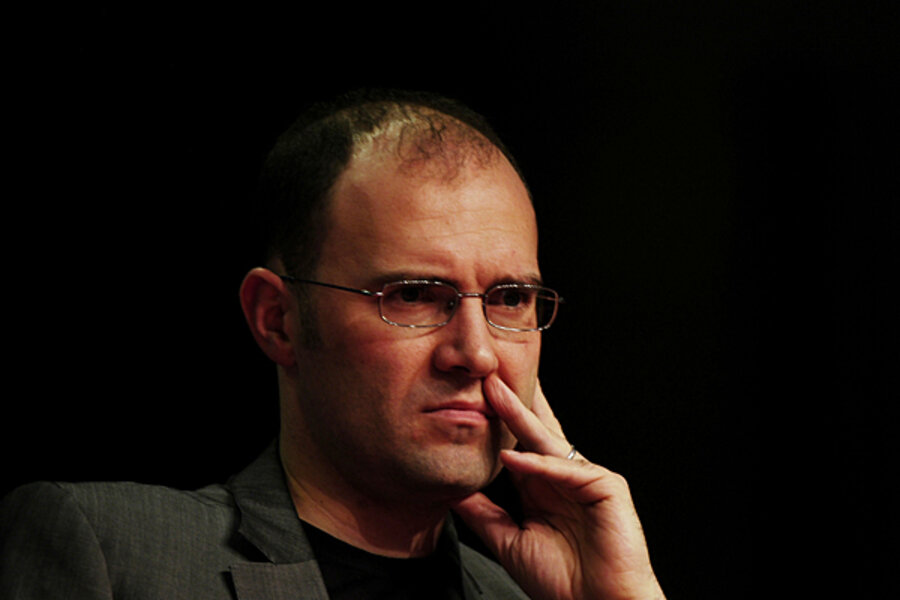A space tourism trip to the moon? It could happen by 2015.
Loading...
If you have a spare $150 million and are looking for an unusual vacation, there's one seat left for a trip around the moon and back in 2015.
That's the word from Space Adventures, a Vienna, Va., firm that has emerged as the world's first true space-travel agency. The company is working with Russia's Space Agency to devise a 17-day trip that includes a stop at the International Space Station before venturing on a trip around the moon and back, officials said Thursday.
The civilian moonshot is perhaps the most ambitious example of how Space Adventures expects space tourism to flourish in the next 10 years. In the decade since investment manager Dennis Tito journeyed to the International Space Station on April 28, 2001, for a cool $20 million, eight private citizens have peered back at Earth from orbit. Space Adventures suggests that number will have increased 15-fold by 2020.
More precisely, a Space Adventures forecast requested by NASA and Boeing, among others, suggests that 140 private citizens will have reached orbit by 2020, thanks in large part to new, privately funded rockets and capsules set to come online in the latter half of the decade. The tally does not include passengers taking suborbital flights with companies such as Richard Branson's Virgin Galactic.
"Realistically, having 140 individuals fly by the time 2020 rolls around is a pretty darn big accomplishment," says Eric Anderson, chairman of Space Adventures. "If you extrapolate out with the same multiple, you might find that by the 2020s, there might be a couple of thousand or more people flying to orbit."
'Optimistic, but not unrealistic'
While the analysis has been performed by a company with a large dog in the hunt for commercial human-spaceflight business, it's conclusions are plausible, according to Jeff Foust, a senior analyst at Futron, an aerospace and technology consulting firm in Bethesda, Md. In 2002, Futron produced a detailed analysis of the potential market for space tourism to low-Earth orbit.
"The results are optimistic, but not unrealistic," he says, cautioning that most of the envisioned increase would likely take place toward the end of the decade. Not only is that when the new crop of privately financed rockets and capsules would be routinely available, but also Russia's Soyuz capsules – the mainstay of the past decade's trips for space tourists – are booked for space-station crew exchanges for the next several years now that the US space shuttle program is drawing to a close.
"You could come back and revisit this in a couple of years and say, 'Well, hardly anyone has flown, so where's that 140 number going to come from?' " he asks. "I think the answer is going to be: It really relies on a much greater supply of seats becoming available in the 2015-plus time frame."
The budding commercial spaceflight industry isn't the only group seeing potential growth in the industry. According to the Government Accountability Office, the Federal Aviation Administration is asking for a 75 percent increase in its budget devoted to spaceflight in the fiscal 2012 budget. The change, from about $26.6 million this year to $45 million next year largely would go for increased staffing to license and oversee the new entrants to human-spaceflight activities.
Where to go on a space vacation?
Where would space tourists go? At least through this decade, the Space Adventures assessment sees three destinations: the International Space Station, as well as two privately financed space stations currently on the drawing boards – one in the US and one in Russia.
For Space Adventures, one of the marquee projects is developing its trips around the moon. The company has been negotiating with the Russian Space Agency to use modified versions of the three-seat Soyuz spacecraft for the two-week sojourn.
The Russians initially designed the Soyuz in the 1960s for trips to the moon. It contains a crew capsule as well as a service module. Part of the negotiations involve the construction of a second, larger service module sporting an upper-stage motor. The motor would provide the extra push to reach the moon, while the larger service module would provide the windows and extra space for supplies, Mr. Anderson explains.
As currently envisioned, the trip would take place in two phases. Passengers would first travel to the International Space Station, where during a 10-day stay they would become acclimated to living in microgravity.
While they stare out on Earth from the station's new cupola, Russia would launch the additional service module. The tourists and their pilot would return to their Soyuz capsule, leave the station, and rendezvous with the module.
With the extra kick from the upper-stage motor, the trio would travel to the moon in 3-1/2 days, spend what Anderson calls "some destination time" orbiting the moon, then head back to Earth.
Anderson says his company is negotiating with a potential occupant for seat No. 2 and hopes to announce a second passenger by year's end. The first seat has already been sold, though Space Adventures has not disclosed the identity of the buyer.
If all goes as planned, the first humans to return to the moon after the Apollo program could well be tourists.
"That would be another watershed event" in the history of human spaceflight, he says.





